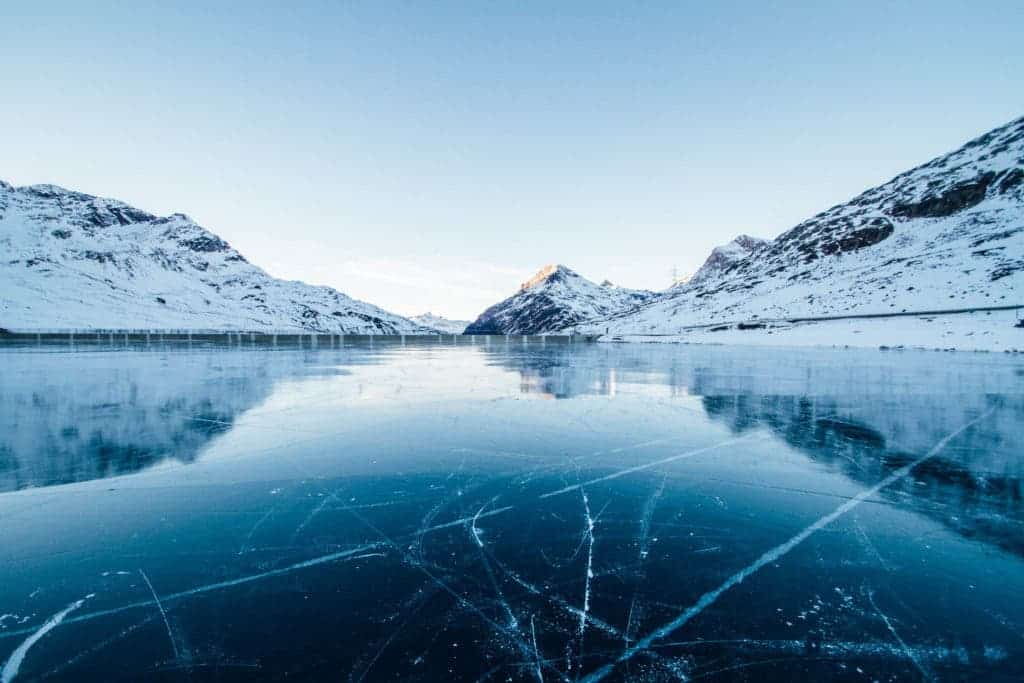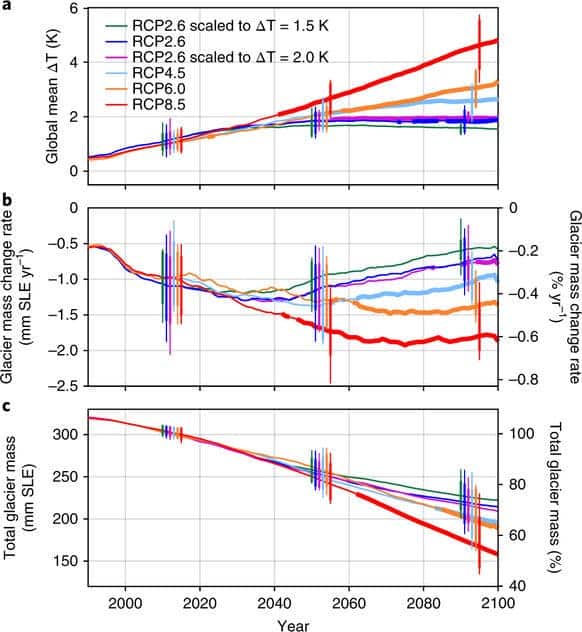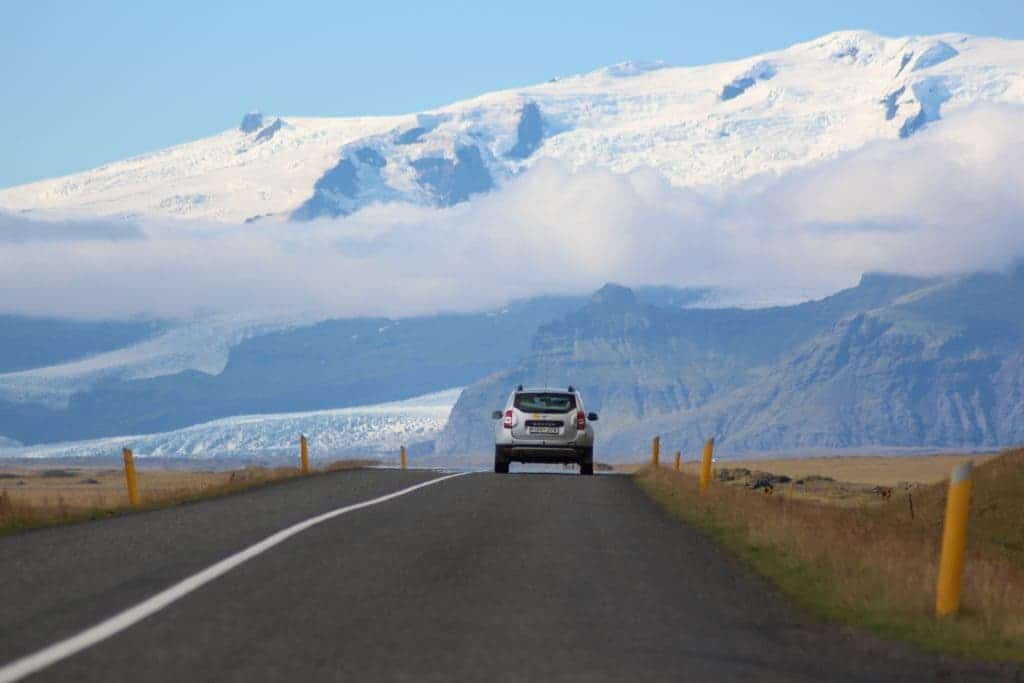New research from the Universities of Bremen and Innsbruck shows we’ve passed a tipping point of glacier melt.

After the reefs, it’s time for glaciers to pay for our choices. Further melting of glaciers for the remainder of this century cannot be prevented, even if we curtail all greenhouse gas emissions, the study shows. Even worse, because of the inertia glaciers espouse when reacting to climate change, humanity’s actions will still have a massive impact beyond the 21st century. Overall, the team estimates, every 500 meters you’ve ever driven in a car will cost the planet a chilling one kilogram of glacier ice.
The limit isn’t going to limit much today
Under the Paris Agreement, the largest binding international climate agreement, 194 states agreed to limit the rise in global average temperatures below 2°C — if possible, below 1.5°C — compared to pre-industrial levels. This is undoubtedly the largest collective effort humanity has ever undertaken to set environmental ills right, but what does this plan mean for our planet’s glaciers?
According to climate researchers Ben Marzeion and Nicolas Champollion from the Institute of Geography at the University of Bremen and Georg Kaser and Fabien Maussion from the Institute of Atmospheric and Cryospheric Sciences at the University of Innsbruck, it’s definitely better than nothing — but that doesn’t mean it’s going to be rosy. Not anytime soon.
[Read More] Repeat Photography From the 1920s and Now Shows Incredible Glacier Retreat
The team has calculated the effects of compliance with the goals set in Paris on the melting rate of glaciers. The team’s analysis included all glaciers worldwide, “without the Antarctic and Greenland ice sheets and peripheral glaciers,” Georg Kaser explains, and modeled their evolution under various climate scenarios.

Image credits Ben Marzeion, Georg Kaser, Fabien Maussion, Nicolas Champollion, 2018, Nature.
Every kilogram (2.2 pounds) of CO2 we emit will melt through 15 kilograms of glacier ice, the team reports — and whether the average temperature rises by 2°C or only 1.5°C makes no significant difference in that equation or on the developmental prospects of glacier ice over the next 100 years.
“Around 36 percent of the ice still stored in glaciers today would melt even without further emissions of greenhouse gases. That means more than a third of the glacier ice that still exists today in mountain glaciers can no longer be saved, even with the most ambitious measures,” says Ben Marzeion.
Beyond the confines of our current century, however, how well we rise up to the challenges set out in Paris does matter.
But it will make a difference tomorrow
The team notes that glacier ice is slow to react to climatic changes — for example, if we wanted to preserve the current volume of glacial ice, we’d need to revert to pre-industrial temperature levels, “which is obviously not possible,” according to Marzeion.
The reverse of the coin here is that our current behavior will have a meaningful impact on the glaciers, but in the long term. That’s why the team calculated the 15 kilograms of ice melt in the long-term per kilogram of CO2 emitted today — to make the consequences and payoffs of our choices immediately palpable for all of us. Carry this estimation over based on an average, newly-registered car in Germany in 2016, it means that one kilogram of glacier ice will be forfeit for every five hundred meters the car travels.

Image in Public Domain.
The findings are particularly worrying for a number of reasons. Chief among them, however, is the fact that this situation has the potential of derailing into a positive feedback loop very quickly. ‘Positive’ here isn’t a good thing — it means that the more something happens, the more it picks up steam. In the case of glaciers, we’re talking about the albedo effect: in short, because ice is white, it reflects more sunlight back out into space than rocks or soil or water — and because there’s so much ice currently, it has a noticeable effect on the energy and temperature balance of the planet. But, once the glaciers start melting, they’ll reflect less energy back into space — and that will make them melt faster. Rinse and repeat.
Overall, the findings are far from what I’d call encouraging. It’s a bad spot to find ourselves in, and it means that we’re assured to face rising sea-levels in the future, alongside all its complications.
At the same time, it’s also a reminder that our actions are never inconsequential — quite on the contrary. The ancient Greeks had a proverb that I keep very close to heart: “A society grows great when old men plant trees whose shade they know they shall never sit in.”
I feel this is a sliver of wisdom we need to pay heed to now, as we confront climate change, more than any other people before us. Even the way you handle a mundane decision today — ‘should I drive to work or ride a bike’ — is a tree that will influence the fate of the whole planet. And it still will, one hundred years after you’re no longer around.
If that’s not empowerment, I don’t know what is.
The paper “Limited Influence of climate change mitigation on short-term glacier mass loss” has been published in the journal Nature Climate Change.






